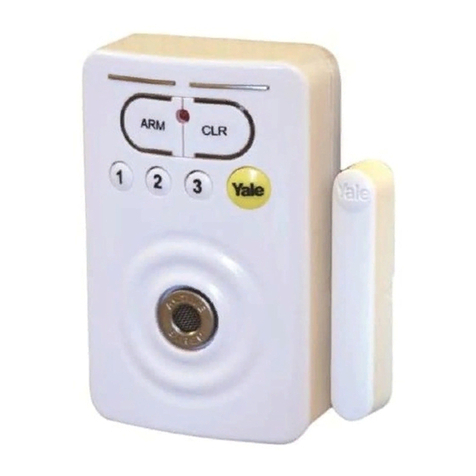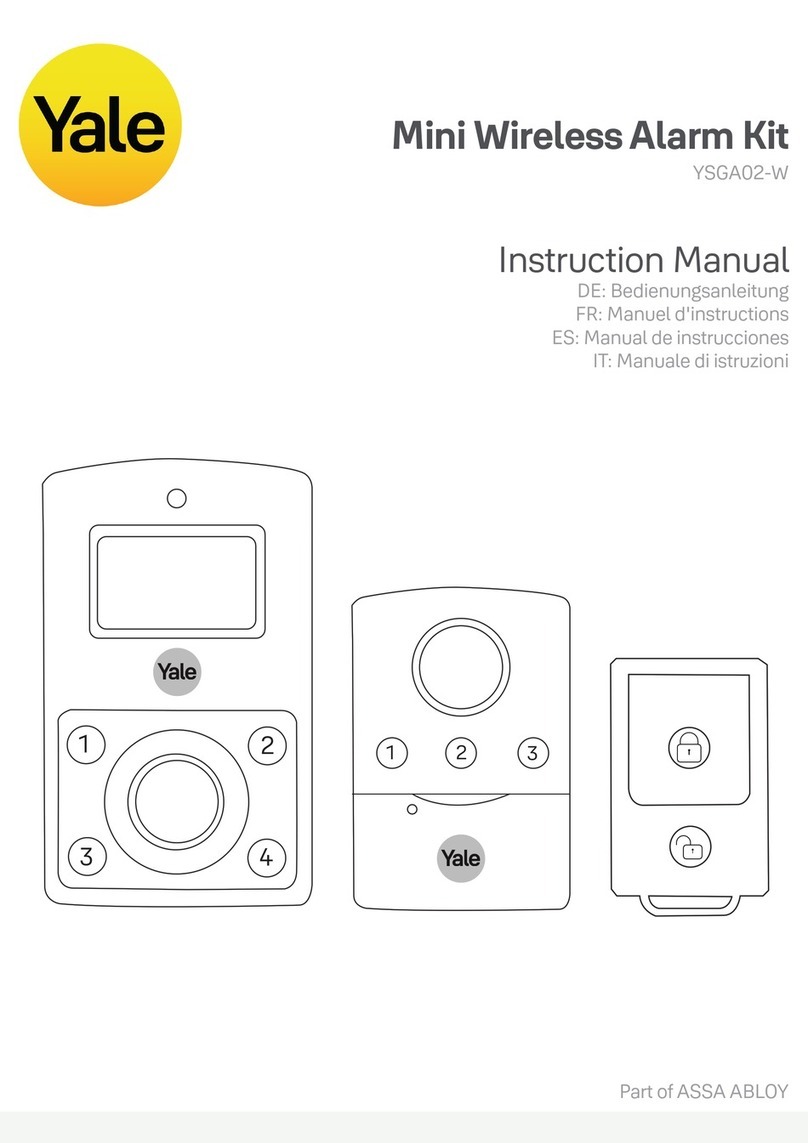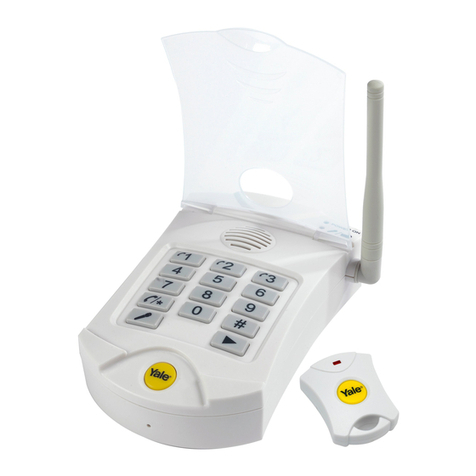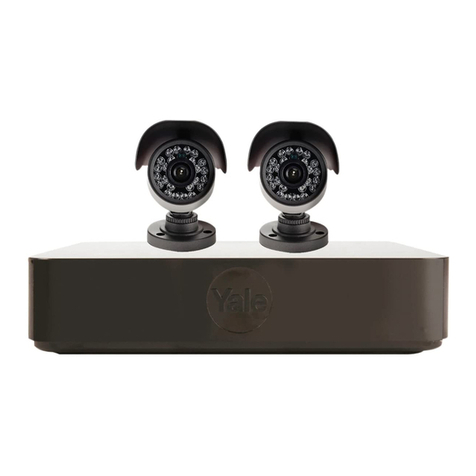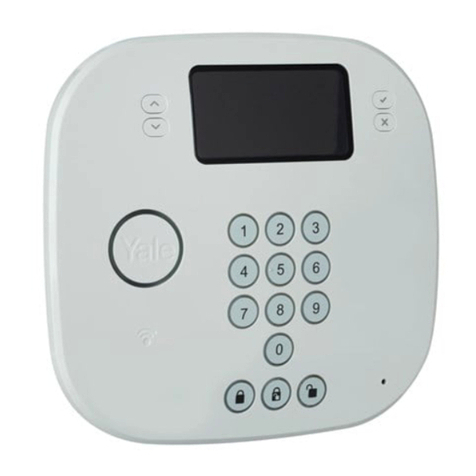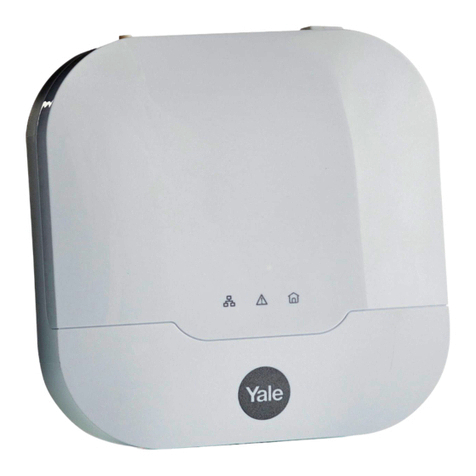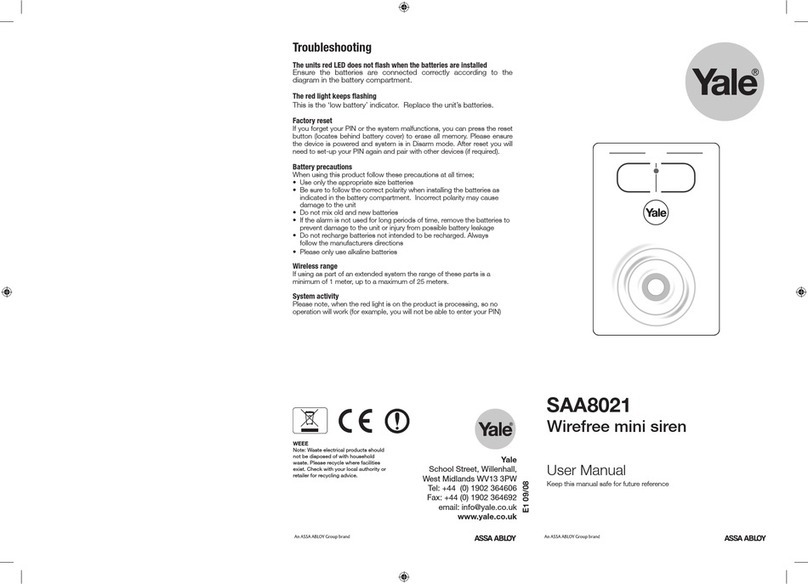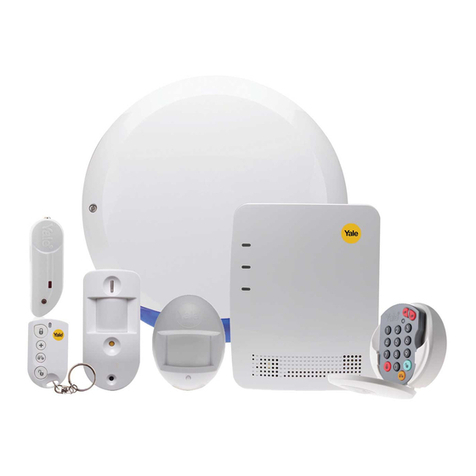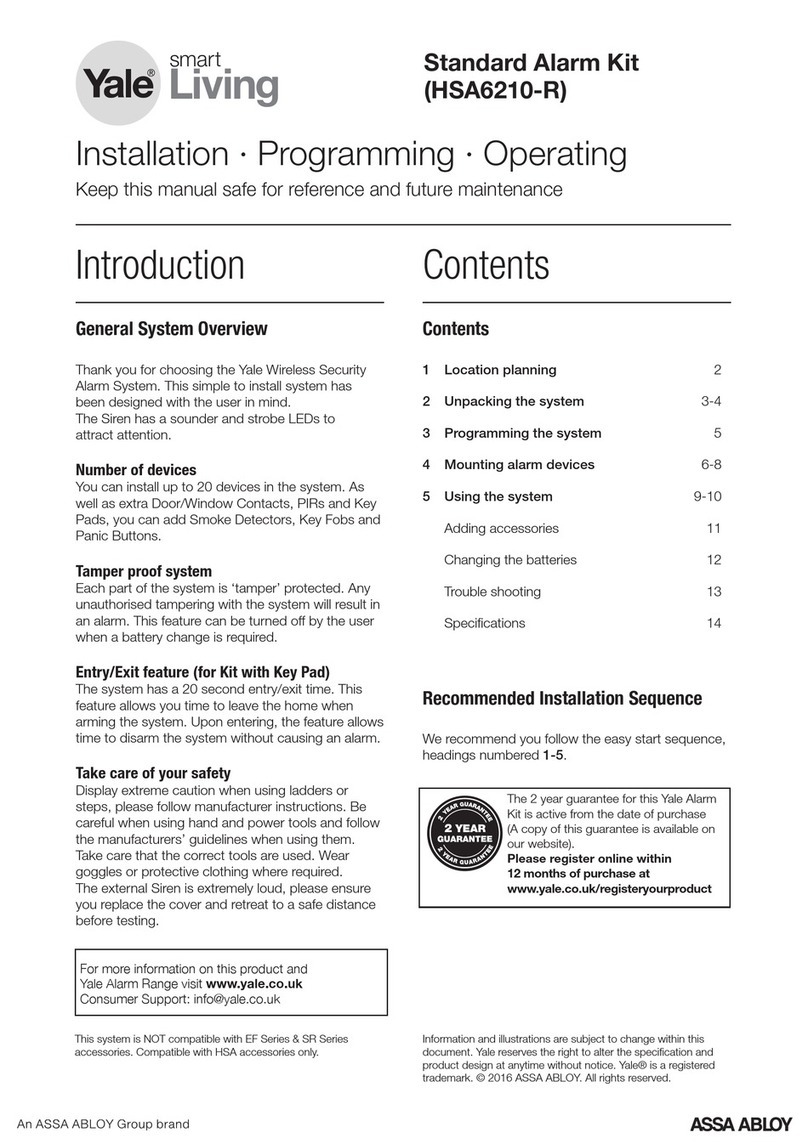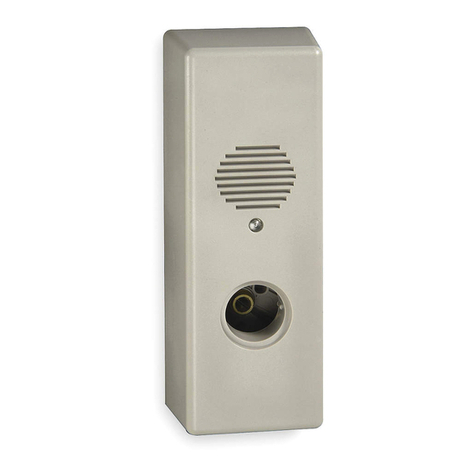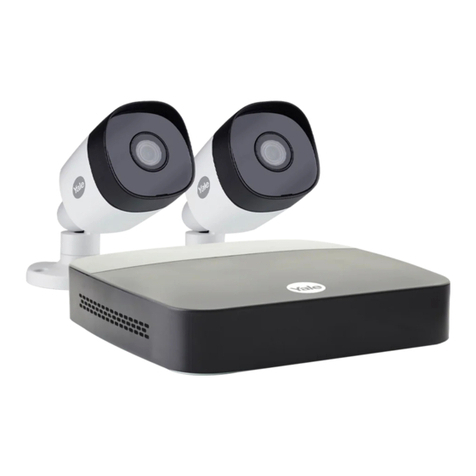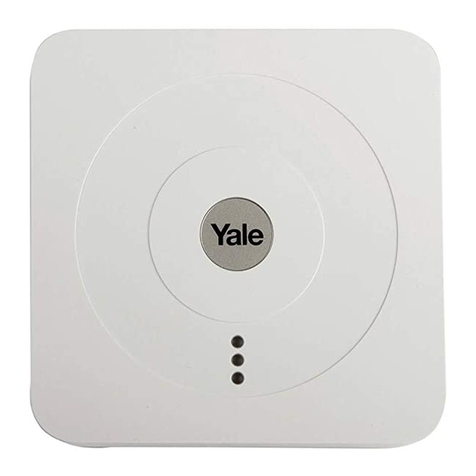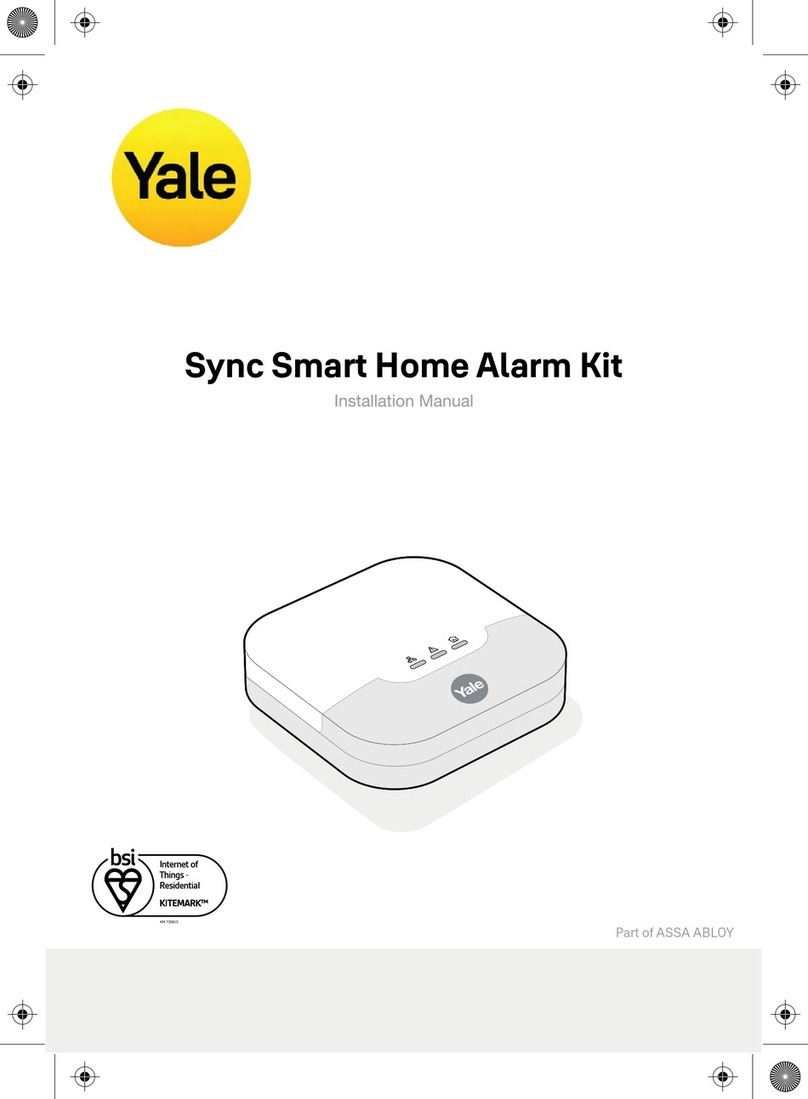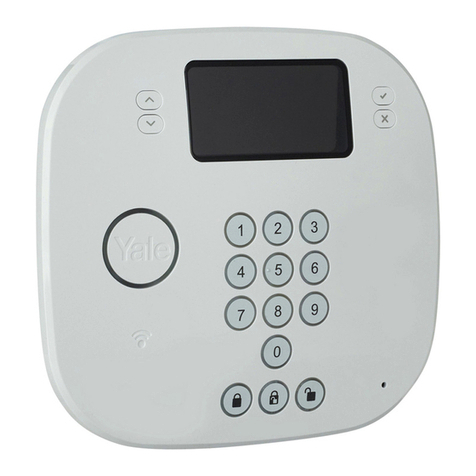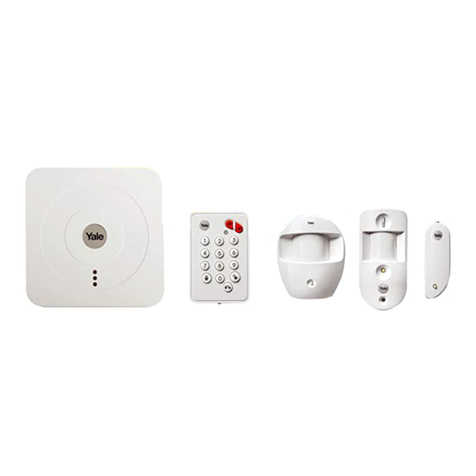2
Introduction
General system overview
Thank you for choosing theYale HSA3400
Security Alarm System.This simple to install
system has been designed with the user in mind.
The siren has a sounder and strobe LEDs to
attract attention. In addition, two window stickers
are included in the pack. Please stick them in a
front and rear window.
No connections
All the components are self contained and no
connections are needed between the units.There
is no need to damage the home decor, lift carpets
or run cables.
Number of devices
You can install up to 20 devices in the system.
As well as extra door/window contacts, PIRs and
keypad remote controls, you can add smoke
detectors, keyfob remote controls and help
watches.
Long battery life
There is no need to wire into the mains supply
or seek the services of a qualified electrician as all
the components are powered by battery (all
batteries included).
The system siren has a typical battery life of 2
years, whilst detectors will operate for 3 years
before batteries need changing. Regular testing
and battery changes (when notified by the system)
will ensure reliability and peace of mind. Please
note that alkaline batteries must be used as
replacements.
Tamper proof system
Each part of the system is ‘tamper’ protected.
Any unauthorised tampering with the system will
result in an alarm.This feature can be turned off by
the user when a battery change is required.
Entry/Exit feature
The HSA3400 has a 20 second entry/exit time.
This feature allows you time to leave the home
when arming the system. Upon entering, the
feature allows time to disarm the system without
causing an alarm.
Take care of your safety
Display extreme caution when using ladders or
steps, please follow manufacturer instructions.
Be careful when using hand and power tools
and follow the manufacturers' guidelines when
using them.Take care that the correct tools are
used. Wear goggles or protective clothing where
required.
The external Siren is extremely loud, please
ensure you replace the cover and retreat to a safe
distance before testing.
Warranty
Please complete and return the warranty card.
This will not be returned unless it is for an
extended warranty period.
Yale offer extended periods of warranty, please
see warranty card for details.
Calling for help
Yale have a helpline team who are there to offer
advice or solve problems over the phone.
Have your certificate number ready.
Helpline 01902 635998
Service available 9am-5pm Monday to Friday.
Information and illustrations are subject to change within
this document.Yale reserves the right to alter the specification
and product design at anytime without notice.
Yale® is a registered trademark. © 2003 Security Products
UK Ltd. All rights reserved.
